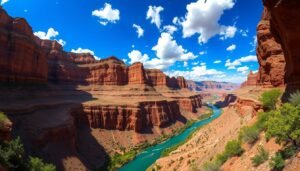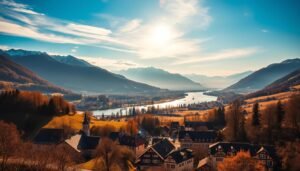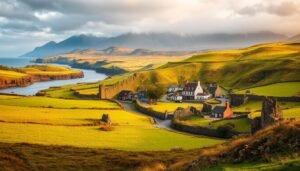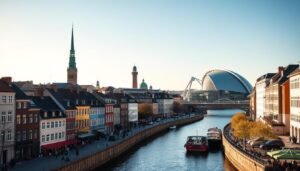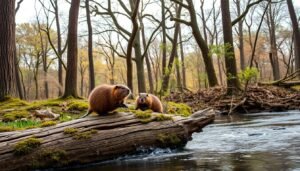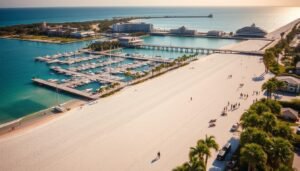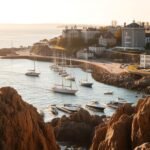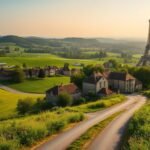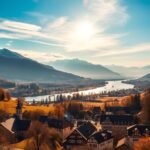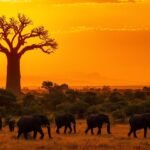,
Surprising fact: I found that more than 70% of my favorite road routes across the country fit into weeklong trips, a quick reminder of how much variety is packed into one nation.
I built this ultimate guide from years of on-the-ground exploration so you can plan smarter travel. I mix big-city energy with easy access to nature, from New York and New Orleans to Big Sur and the Pacific Coast Highway.
My list highlights coastal drives, urban culture, small towns, and wine valleys. I point out neighborhoods I return to, scenic detours worth the extra mile, and local food and music scenes that shaped my trips.
Expect honest, first-person picks and practical notes on timing, seasons, and how to link destinations efficiently. Use this guide as a starter kit or a refresh for repeat travelers who want a better route that fits their interests.
Key Takeaways
- I compiled this list from long-term travel across the United States.
- Mix cities and nature for a balanced itinerary.
- Road trips from coast to coast offer striking variety in short timeframes.
- I emphasize neighborhoods, food, and music that made each stop memorable.
- The guide helps you string destinations efficiently by season and interest.
How I Curated My List of the Best Places to Visit in America
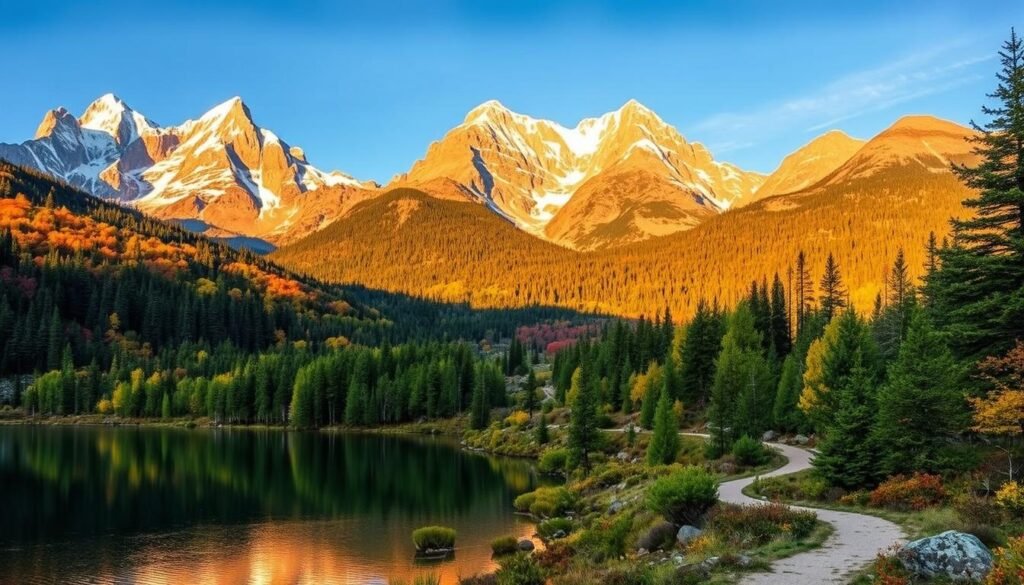
I chose each entry after years spent living, working, and traveling across the United States.
I rely only on destinations I’ve been to multiple times or lived near. That perspective keeps the guide grounded in real experience, not secondhand hype.
Seasonality, safety, and sense of place drove many choices. I noted when a short change in timing makes a huge difference, like quieter beach days or peak fall color in the mountains.
My process favored places that combine culture and outdoor options. That way a morning museum visit can pair with an afternoon hike or coastal walk during the same trip.
“I revisited notes and only kept what felt standout after several times in town or on the trail.”
- I prioritized distinct neighborhoods, food traditions, and clear ways around town.
- I weighed how stops link into a coherent trip with day trips and short flights.
- I flagged whether a destination suits a weekend or a longer stay.
| Criteria | Why it Matters | Example |
|---|---|---|
| Repeat Visits | Shows what endures beyond a single trip | New Orleans, Rocky Mountains |
| Seasonal Fit | Controls crowds and comfort | Miami off-season, autumn Rockies |
| Trip Connectivity | Makes routing efficient and enjoyable | California coast loops, Midwest city hops |
New York City and East Coast Icons I Keep Returning To
![]()
New York keeps pulling me back with a pulse that feels both constant and surprising. I lived there nearly two years, and I still measure other trips against its rhythm.
Why the city never gets old: energy, art, food, and epic day trips
New York’s energy hits the moment you step onto the street. I map my days by neighborhood — SoHo galleries in the morning, a museum hour on the Upper East Side, then a late snack in the East Village.
The art scene rewards spontaneity; I’ve popped into Chelsea shows and seen major exhibitions at the Met on the same afternoon. Food is always a discovery, from classic pizza and bagels to tasting menus and tiny new spots.
East Coast side adventures: Hudson Valley, Hamptons, and coastal sunsets
I build at least one day trip into every stay. The Hudson Valley offers river views, craft cider, and historic homes. The North Fork’s wineries and the Hamptons’ coast give sandy beaches and golden-hour sunsets.best-places-to-visit-in-florida
“I return often because new york keeps offering new exhibits, seasonal menus, and small neighborhood finds.”
- I walk bridges, waterfronts, and parks for changing views block by block.
- Quick escapes pair city buzz with countryside or shore calm by sunset.
For travelers eyeing places visit usa, New York remains a central benchmark among urban places I love.
Miami Vibes: Beaches, Art Deco, and Latin Flavor
![]()
There’s a layered rhythm in Miami that mixes bright sand with late-night music and gallery crawls.
Best time to go: why I love the off-season summer window
Summer (July–August) surprised me. Hotels drop rates and crowds thin if you can handle heat and humidity.
I plan outdoor activities for early mornings and evenings, and use midday for museums or long lunches. Those quieter days let me enjoy South Beach mornings without the usual crush.
Neighborhoods I can’t resist: South Beach, Little Havana, Wynwood
South Beach hooks me with pastel Art Deco along Ocean Drive and wide beach stretches where people-watchers gather. The preserved architecture makes a simple walk feel like an open-air lesson in design.best-places-to-visit-in-october
Little Havana centers the neighborhood around Cuban coffee, ventanita snacks, and live music. I soak up local food and quick cultural moments in tight blocks that are easy to explore on foot.
Wynwood is always evolving; murals, pop-up galleries, and a restless creative scene turn an afternoon into a new discovery. The neighborhood shows how this city keeps reinventing itself while staying rooted in Latin culture.
“I can cover a sunrise on the sand, a Little Havana lunch, a Wynwood walk, and a South Pointe sunset in one smooth loop.”
- Why I go in summer: fewer crowds and friendlier hotel rates.
- How I plan: early beach hours, shaded afternoons, late-evening music.
- What stays fresh: food, murals, and the social energy of the streets.
For travelers who visit usa with a taste for sun and culture, Miami offers compact, vibrant neighborhoods where art and Latin life feel inseparable.
Pacific Coast Highway and Big Sur: America’s Dream Road Trip

I remember the first time the highway opened into a cliffside view and I had to pull over just to breathe it in. The stretch between San Francisco and Los Angeles feels cinematic: Big Sur’s cliffs, hidden coves, and famous bridges make every mile a highlight.things-to-do-in-kona-hawaii
Route highlights I drove
Carmel-by-the-Sea and Monterey serve as perfect day stops with storybook streets and marine walks. I weave Solvang into the drive for pastries and detours to Santa Maria Valley wineries before reaching Santa Barbara’s Spanish revival light.
Views, trails, and day stops along the Pacific coast
Short hikes and coastal trails offer quick overlooks and redwood-shaded canyons. I lace up for 20–40 minute out-and-backs that end at dramatic viewpoints or quiet beaches.
Road trip tips: pacing, sunsets, and where the coastline steals the show
Pacing matters: I plan flexible day hours and leave room for spontaneous pullouts. Bring layers for foggy mornings that clear into golden afternoons.
“I keep my camera handy for bridge pullouts, but I also put it away and let the surf do the storytelling.”
- I stop often—views demand it and the route rewards curiosity.
- Aim for a long weekend at minimum; a week lets you add wine-country overnights.
- Wear shoes for trails and pack a light jacket for coastal weather changes.
San Francisco & The Bay Area: Food, Culture, and Golden Gate Views
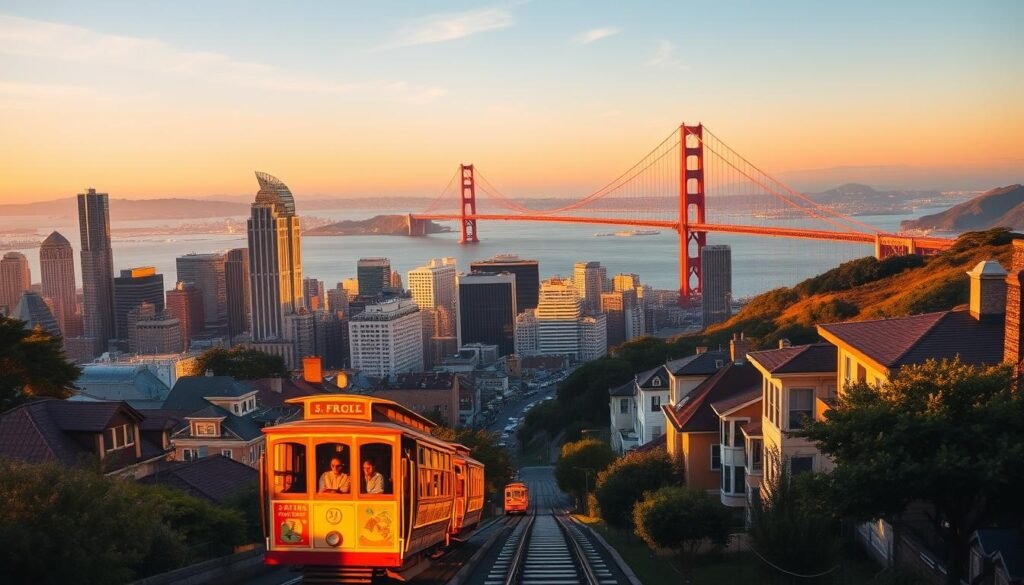
San Francisco still surprises me; each neighborhood reads like a small city with its own rhythm. I plan short loops so I can taste a market, track a mural, and reach a waterfront view all in one day.
Neighborhood-by-neighborhood: how I explore the city
I start in the Mission for murals and bold flavors, then drift to North Beach for espresso and narrow streets.best-places-to-visit-in-october
Nob Hill and Russian Hill give me those hilltop views and classic stairway walks. Food is central: farm-to-table stalls at the Ferry Building and small tasting menus shape my afternoons.
Nearby nature: redwoods, coastal trails, and farm-to-table weekends
When I need a reset I cross the bridge to Muir Woods for tall redwoods and quiet trails. Coastal walks along the Golden Gate lead to ocean views that change by the hour.
Parks and stairways are my secret routes — Lyon Street Steps at sunrise or Presidio paths for sea breezes and skyline angles.
“A perfect first visit balances an urban day with a redwood-and-coast day.”
- I use public transit and compact blocks to stack museums, bakeries, and sunset spots into efficient days.
- People here care about food and community, so I ask servers for new openings and neighborhood tips.
Los Angeles Beyond the Movies: Hills, Beaches, and Art
![]()
Los Angeles mixes hillside trails, coastal calm, and an energetic art scene that keeps me exploring. I start early with a short drive to a trailhead and end most days watching twilight from Griffith Observatory as the city lights flicker on.things-to-do-in-kona-hawaii
Hikes and beach loops: I hike Runyon Canyon for big views, then swing down to Santa Monica for sand and ocean air. One day can easily hold both, with a taco stop between.
Griffith sunsets, Runyon trails, and Santa Monica days
I time my ascent so sunset paints the skyline. Trails offer quick rewards and keep the day flexible.
Studio magic and architecture: why the behind-the-scenes tour wowed me
The Warner Bros. Studio Tour showed me sets, props, and the careful craft behind screen life. Architecture fans will spot mid-century gems across neighborhoods.
“Mix one studio experience with hikes and beach time; it’s the clearest introduction to LA’s outdoor-meets-creative spirit.”
- Early morning drives lead to quieter trailheads and cooler beach sand.
- Neighborhood picks—Silver Lake, DTLA, Venice—keep travel efficient and lively.
- Leave room for unexpected views at Mulholland turnouts and hilltop parks.
| Activity | Why I Go | Best Time |
|---|---|---|
| Runyon Canyon hike | Short route with skyline views | Morning |
| Griffith Observatory | Sunset views and architecture | Late afternoon to twilight |
| Santa Monica Beach | Ocean backdrop and sand reset | Early morning or late afternoon |
| Warner Bros. Studio Tour | Behind-the-scenes filmmaking insight | Afternoon |
Chicago & Great Lakes Urban Energy
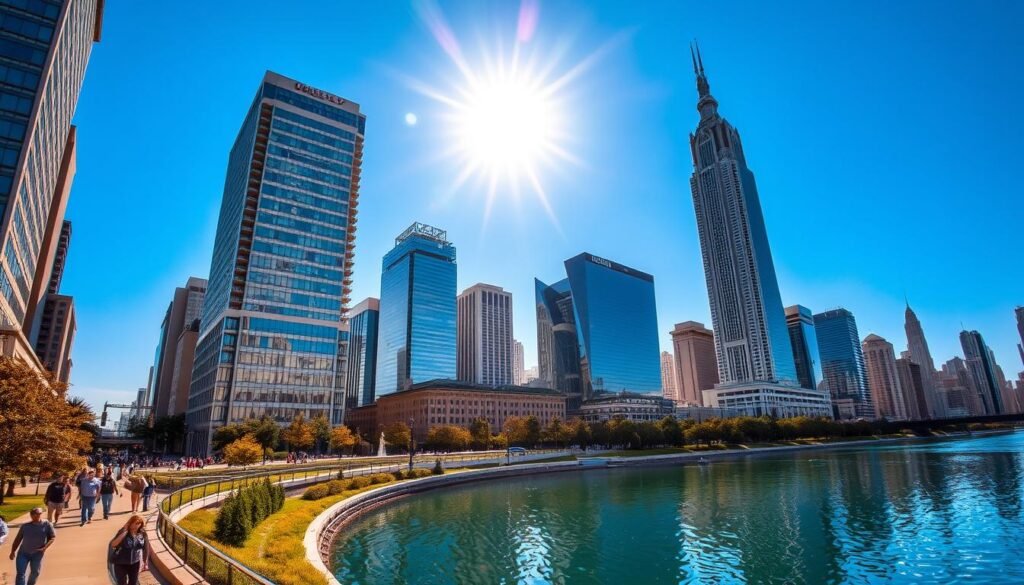
When I step onto the Riverwalk I feel the city shift—patios fill, joggers pass, and the skyline frames every photo. The river gives excellent views and lets me pace a day between architecture tours and coffee stops.things-to-do-in-kona
Architecture, river views, and a food scene that surprised me
My DIY architecture loop begins at the Wrigley Building and winds past the Tribune Tower and the luminous Tiffany Dome at the Cultural Center. Each facade tells a different story of craft and design.
The food scene surprised me; creativity here rivals San Francisco, Los Angeles, and New York. I move my days by neighborhood—West Loop for creative menus, the Loop for classic monuments, and the lakefront when I need a reset.
Art appears everywhere: public sculptures, murals, and gallery shows that reward wandering without a strict plan. People are welcoming and quick with tips, so I ask bartenders and baristas for off-menu favorites.
“Two to three days give a great introduction, but every return reveals new dining scenes and quiet corners.”
- Plan: start on the Riverwalk for photos and easy tours.
- Pace: split time between architecture, food, and lakeside walks.
- Tip: pack layers and a rain jacket—weather swings fast by the lake.
For a compact primer on what to see, I often point friends to an ultimate Chicago bucket list that maps neighborhoods and must-see spots for short trips.
Best places to visit in america: My Must-See Cities and Culture Capitals

Some cities teach you about a country through sound, taste, and the stories on their streets. I picked three that show how music, history, and local food shape a place.
New Orleans blends French, Spanish, Creole, and Cajun roots into a unique culture. Jazz spills from clubs and street corners, and classic cocktails feel like part of the city’s vocabulary.
I balance Bourbon Street curiosity with late-night sets on quieter corners. That’s where the music truly lands and where I linger over soulful food and a good cocktail.
New Orleans for music, cocktails, and Creole/Cajun cuisine
New orleans hums with live jazz and brass bands. I follow tips from locals to find intimate venues and old-school bars where the scene feels alive.
Charleston’s history, hospitality, and Lowcountry flavors
Charleston won me over with walkable historic streets and warm people. Lowcountry food—shrimp and grits, she-crab soup—tells a regional story through seasonality and craft.
I also make time to study the city’s past. Many grand homes reflect wealth tied to slavery, and I find that learning this history matters for a full visit.things-to-do-in-kyoto-japan
Portland’s laid-back scene and Willamette Valley wine country
Portland feels easy to navigate by transit, and neighborhoods like NW 23rd reward slow exploration. I stack a city day with a short drive out to Willamette Valley for Pinot Noir and farm-to-table lunches.
“Two to three days lets you taste, listen, and wander without rushing through the small details.”
| City | Why I Go | Suggested Stay |
|---|---|---|
| New Orleans | Live music, Creole/Cajun food, cocktail tradition | 2–3 days |
| Charleston | Historic district, Lowcountry cuisine, thoughtful history | 2–3 days |
| Portland | Laid-back neighborhoods, transit access, nearby wineries | 2 days + day trip |
How I link these spots: stack an evening on Frenchmen Street, a museum and plantation morning in Charleston, or a winery afternoon near Portland. For more ideas on similar travel arcs, see this guide.
The Grand Canyon and Canyon Country, Utah: Red Rock, Rivers, and Unforgettable Trails
![]()
Standing on the rim at first light, I felt the scale of this landscape settle into me. The grand canyon shows its best face outside peak summer when temperatures ease and visitors thin.
Grand Canyon: Rim-to-river perspectives make the scale real, but I only attempt that kind of hike on a cool morning with extra water, layers, and a clear plan. Short trails near the rim offer dramatic views if you’re short on time.
Arches, Canyonlands, and rock art
I time Delicate Arch for sunset and bring a headlamp for the hike back. Canyonlands’ Needles rewarded long, quiet routes and Horseshoe Canyon’s Great Gallery felt like a secret chapter of the desert.
Zion’s Narrows and seasonal planning
Zion’s river hike is unique—wading between red walls—so I check flow rates and rent dry gear in cooler months. I plan roughly one park per day to let trails unfold without rushing.
“Carry extra water, sun protection, and a paper map—cell service can be spotty here.”
- Avoid peak heat at the grand canyon; aim for shoulder seasons.
- Pair marquee overlooks with quieter corners for the truest experience.
- A smart trip balances sunrise starts and late-afternoon light for the best views.
Rocky Mountain Highs: Colorado Classics and Teton Peaks
Morning light on alpine ridges pulls me awake faster than any alarm. I head for high meadows and spare myself crowds with sunrise starts in the national park.
Rocky Mountain National Park sunrises and autumn elk bugles
I chase quiet trails for alpenglow and return in September for elk bugles that echo across aspen valleys. Early starts mean clearer views and easier parking at popular trailheads.
Ouray, American Basin, and Crested Butte: wildflowers, hot springs, and alpine drives
Ouray feels compact and vigorous—hot springs, steep walls, and jeep roads that fill a day quickly.
American Basin blooms in July with columbine and primrose; strong hikers can tag Handies Peak for a true summit day.things-to-do-in-duluth
Crested Butte delivers summer meadows and Kebler Pass aspens that turn gold each year.
Grand Teton moments: the Snake River overlook and big-mountain day hikes
I never skip the Snake River overlook before a long hike. Trails here offer grand peaks, wildlife sightings, and the kind of scale that humbles me.
“Pack layers, watch afternoon storms, and start early—these national parks reward planning and respect.”
- Tip: pair one day in Rocky with a San Juan or Teton day for a true alpine sampler.
- Etiquette: yield on narrow trails and give wildlife space so these areas stay special year after year.
Conclusion
I found that layering two cities with one national park makes for a trip that feels both rich and relaxed. ,
Travel here rewards curiosity: a city morning, a park afternoon, and a coastal sunset can all fit into a single week. Pick fewer stops, plan two or three nights per city, and add a park day for balance.
Food, music, and local people will shape your best memories—New York, San Francisco, New Orleans, or a sunrise at the Grand Canyon all tell different stories. For more ideas on USA bucket-list destinations see USA bucket-list destinations.
Repeat trips deepen the rewards. Ask locals, chase sunrise views, and let the road show you a country that keeps giving.






